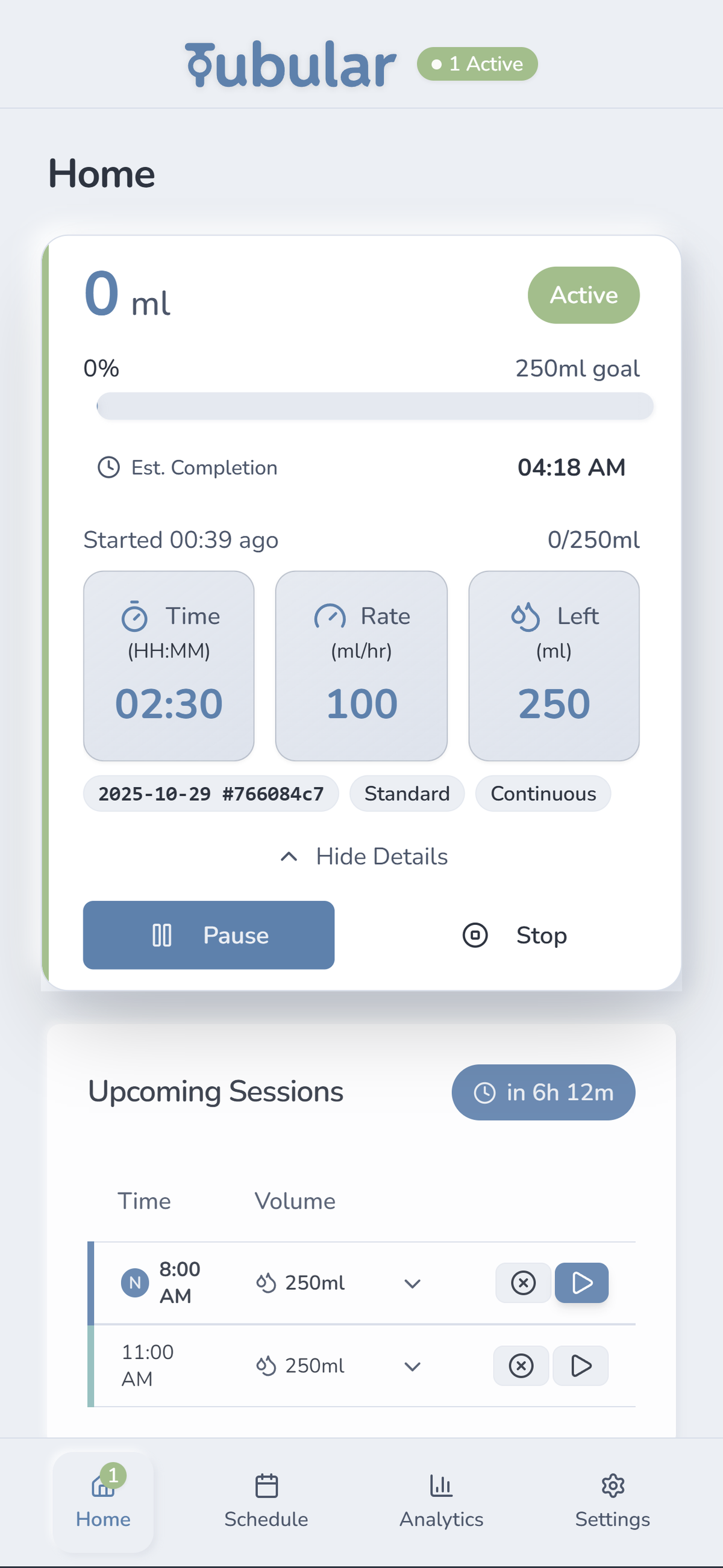From Raspberry Pi to Reality: Building Tubular, One Failed Experiment at a Time

Dustin Verzal

The best technology doesn't announce itself with complicated hardware and impressive algorithms. It just makes Tuesday morning a little easier to navigate.
The Raspberry Pi arrived in May. So did the microphone, the accelerometer, the gyroscope, the camera. The dining room table disappeared under a pile of hardware and hope.

The plan was simple: build a device that could listen to an enteral feeding pump, watch it, sense it, understand
it. Something that could track feeds automatically, because no one should have to set a phone alarm for 2 AM to
log that their child's feeding finished. No one should have to choose between sleep and accurate data.
The Python application worked. The Bluetooth pairing worked. The whole contraption talked to a mobile device
exactly like it was supposed to. And then came the math on what it would cost to put one of these in every home
that needed it.
The hardware alone made it impossible. Not impractical. Impossible. This was supposed to make life easier, not add
another financial burden to families already navigating insurance authorizations and DME suppliers and formula
shortages.
When the Smart Solution Isn't the Right Solution

Prototype UI
June brought a new direction: focus efforts on building the companion app. We began developing a machine learning audio classifier trained specifically on a Moog Infinity pump. The idea
was beautiful in its simplicity. Your phone would just... know. It would hear the pump running, hear it finish,
log everything automatically. Seamless. Invisible. The kind of technology that disappears into the background of
life, which is exactly where medical device management should be.
The accuracy wasn't good enough. Not quite. Not reliably. Not across the variation of every pump, every
microphone, every home environment. And the path to "good enough" meant testing and training models for every pump
and microphone combination families might use. The development costs multiplied. The maintenance complexity
multiplied. The timeline would stretch into years.
We were building something technically impressive that might never actually ship. That might work beautifully in a
quiet room with one specific pump model and fail completely in a kitchen with siblings playing and a dishwasher
running.
The Pivot Back to Possible

Early Prototype 2 UI
September meant starting over. Not from scratch, but from a different question: what if we stopped trying to
automate the logging and started making the logging itself less burdensome?
The app development focused on UI, on flow, on reducing every unnecessary tap and swipe. The goal shifted from
"invisible" to "invisible friction." What if the app anticipated what you needed to log based on your schedule?
What if it remembered your usual formula volume and rate, so you weren't typing the same numbers six times a day?
What if it made the manual part feel less manual?
By October, the architecture expanded to include a cloud backend. Not just for data backup, but for something more
valuable: information sharing. Multiple caregivers. Multiple devices. School nurses who need to log afternoon
feeds. Night nurses who need to see what happened during the day. Grandparents who want to help but need to know
the routine.
The features being built now are the ones that emerged from listening to what families actually need, not what
seemed technically impressive.
January 1st, 2026

Alpha UI
That's the target for the Alpha release. Not because the product is perfect, but because it's useful. Because it
solves a real problem in a way that's actually accessible to the people who need it.
The journey from Raspberry Pi to cloud-based app wasn't about abandoning innovation. It was about finding the path
between what's technically possible and what's practically deployable. Between what's clever and what's helpful.
There's still hardware on that dining room table. The microphone still works. The ML model still exists. Maybe
someday, when costs come down or accuracy improves or a new approach emerges, automatic tracking will be part of
Tubular. But not at the expense of shipping something valuable now.
If you're managing enteral feeding for yourself or someone you care for, if you've wished for better tools, if
you're tired of paper logs and alarm fatigue and wondering whether Tuesday's feed finished at 3:17 or 3:27, we
want to hear from you. Alpha testing starts in January. It will be imperfect. It will need your feedback. It will
be built alongside you, not just for you.
Because the best technology doesn't announce itself with complicated hardware and impressive algorithms. It just
makes Tuesday morning a little easier to navigate.
---
Interested in Alpha testing? Sign up at Alpha. We're specifically looking for families and
caregivers willing to share feedback, report bugs, and help shape what Tubular becomes.